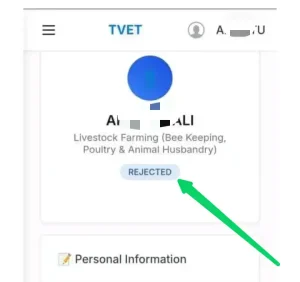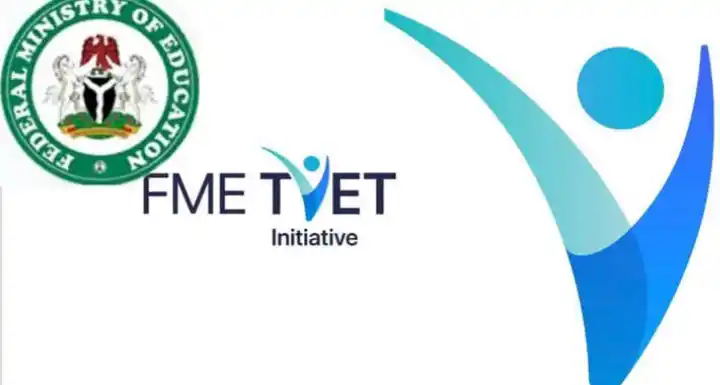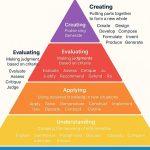
tvet trainee application rejection: Why Applicants Are Being Rejected and What Comes Next
The Federal Ministry of Education (FME) Technical and Vocational Education and Training (TVET) initiative, a cornerstone of Nigeria’s drive for skill acquisition programs and youth employment, has reached a critical phase. Recent updates show that the selection process is intensifying, leading to tvet trainee application rejection, a significant number of tvet trainee applicants have been rejected. The status on many dashboards has now visibly changed to “rejected.” This development has generated queries and concerns among the vast pool of candidates who applied for this vital vocational training opportunity.

Understanding tvet trainee application rejection
The core information remains that the FME TVET system has begun tvet trainee application rejection a decisive phase of trimming the applicant list. Applicants have been strongly advised to immediately log into their official dashboard. The designated portal for checking the TVET application status is www.tvet.education.gov.ng. A ‘Rejected’ tag confirms that the applicant will not be eligible for participation in the current cohort of the technical training programme.
What the “Rejected” Status means for Applicants
TVET trainee application rejection means that the applicant has been removed from the current cohort but may be considered in the future if they reapply.
- Ineligibility for Current Cohort: The primary implication is the immediate exclusion from the ongoing training cycle.
- Potential for Future Consideration: While rejected for now, it doesn’t necessarily close the door forever. As the program is designed to be continuous, future phases may open up opportunities, possibly requiring reapplication or a review of the current database.
- Need for Review: Rejected candidates should carefully review the application details they submitted. Errors, missing documentation, or failure to meet specific criteria could be reasons for rejection.
Alongside the critical status update, the portal also displays essential personal and financial information for successful verification and placement, including the applicant’s full name, registered email, phone number, state, local government area (LGA), bank name, account number, and address. This detailed information suggests a highly meticulous and formalized selection process.
The Scale of the TVET Initiative and the Selection Challenge
The sheer volume of interest in TVET Nigeria underscores the national hunger for meaningful skill acquisition programs. The initial reports highlighting the application numbers paint a clear picture of the challenge faced by the program administrators. Managing such a vast pool of candidates necessitates a rigorous and often exclusive selection mechanism.
Key Program Statistics and Context
The reported figures reveal the significant scale of the undertaking:
- Total Applications Received: Approximately 1.3 million.
- Completed Applications: A commendable 960,000.
- Accredited Centres Onboarded: 1,600 centres nationwide have been accredited to deliver the training. This accreditation process ensures quality and standardization, a critical component of successful technical education.
- Students Placed (Current Cohort): 58,000.
- Initial Placement Target: Up to 150,000.
Comparing the 960,000 completed applications with the 58,000 initial placements highlights the necessity of rejecting the majority of applicants for the current phase. This disparity, while unfortunate for rejected individuals, is a function of the available capacity, budgetary constraints, and the stringent quality control measures being implemented. The program prioritizes a high-quality learning experience over mass enrollment that could compromise standards.
Strategic Tracks of the TVET Program
The FME TVET structure is designed to cater to various learning paces and career goals, offering different pathways to achieve a recognized National Skills Qualification Framework (NSQF) certification. These structured tracks are a testament to the program’s commitment to providing flexible yet comprehensive vocational training options.
Explanation of the Three TVET Tracks
- Short-Term Skill Training Centres Track:
- Duration: Typically six months.
- Focus: Rapid skill acquisition in specific, in-demand trades. Ideal for individuals seeking quick entry into the workforce or those needing to upskill rapidly.
- Outcome: A foundational certificate in a specific vocational area.
- Vocational Enterprise Institutions (VEIs) Track:
- Duration: Twelve months (one year).
- Focus: More specialized and in-depth training, often integrating entrepreneurial skills and business management alongside technical expertise. This track is crucial for developing job creators, not just job seekers.
- Outcome: A higher level of vocational certification, often bridging the gap between basic skills and specialized industry requirements.
- Technical College Track:
- Duration: Three years of continuous, formalized learning.
- Focus: Comprehensive technical education, similar to traditional schooling but with a strong emphasis on practical, hands-on skills. This track aims to produce highly competent technicians and technologists.
- Outcome: A full technical qualification, such as the National Technical Certificate (NTC) or its equivalent, positioning graduates for advanced careers or higher education.
A significant, often overlooked, aspect of the program’s quality control is the training of personnel dedicated to maintaining high standards. The report mentioned that a total of 2,080 Quality Assurance Managers have been trained nationwide. This massive investment in human capital demonstrates a commitment beyond just enrollment; it’s about ensuring the training provided across the 1,600 accredited centres meets national and international benchmarks.
The Role of Quality Assurance in TVET Nigeria
The Quality Assurance Managers are responsible for:
- Curriculum Fidelity: Ensuring the training delivered aligns strictly with the approved syllabi and industry needs.
- Centre Accreditation Review: Periodically auditing the training facilities, equipment, and instructors at the TVET centres.
- Standardization of Assessment: Ensuring that all trainees are assessed fairly and consistently, leading to credible certification. This is vital for the value of the NSQF.
- Feedback Loop: Collecting data and feedback to inform future curriculum revisions and program improvements, making vocational training highly responsive to the labour market.
This stringent quality control is likely a major contributing factor to the conservative initial placement number (58,000) compared to the ambitious target (150,000). The current capacity of high-quality, fully vetted centres and quality assurance personnel dictates the pace of enrollment.
The Economic Impact of Successful Technical Education
Experts often point out that a robust technical education system can:
- Bridge the Skills Gap: Providing the specific, hands-on skills that industries like manufacturing, construction, and ICT desperately need. For instance, the demand for certified welders or software developers far outstrips supply in many regions.
- Stimulate Local Production: Equipping local artisans and technicians to produce high-quality goods and services, reducing reliance on expensive imports.
- Formalize the Informal Sector: Bringing the vast, but often unstructured, informal sector under the umbrella of certified training, leading to better wages and greater economic security. Read more about the importance of TVET in global development on the World Bank website.
What Rejected and Shortlisted Applicants Should Do
For the 58,000 shortlisted candidates who have been matched to training centres, the focus must now shift to preparing for the training. Their next steps involve accepting the placement and following the necessary onboarding instructions, which will be communicated via the same TVET application status dashboard.
Action Plan for Rejected Applicants
While the ‘Rejected’ status is discouraging, it is not the end of the journey toward skill acquisition programs. Rejected candidates should adopt a proactive approach:
- Verify and Rectify: Check all application details for potential errors that led to rejection. Prepare to submit a perfect application for the next round.
- Seek Alternative FME TVET Pathways: Investigate other government-backed or private-sector vocational training opportunities while awaiting the next TVET phase.
- Focus on Foundational Skills: Use the waiting period to improve literacy, numeracy, and basic digital skills, which are often prerequisites for advanced technical education.
- Stay Connected: Regularly check the Federal Ministry of Education website for official announcements regarding subsequent phases of the TVET Nigeria program. The government has a vested interest in expanding youth empowerment, so more slots will eventually become available.
The initial placement of 58,000 candidates represents the first, highly selective step towards achieving the target of 150,000. It is a calculated move to ensure the successful execution of the program’s pilot phase. As these first cohorts commence and complete their training, the capacity and operational framework of the FME TVET system will be refined, paving the way for the smooth integration of the remaining applicants in subsequent cycles. The national push for skilled manpower through structured vocational training is a marathon, not a sprint, and every applicant should remain ready for the next opportunity.








